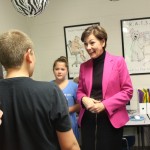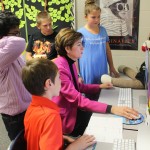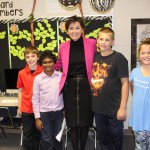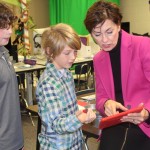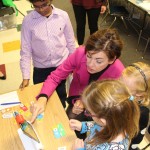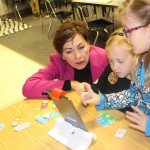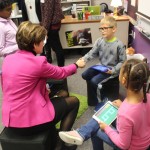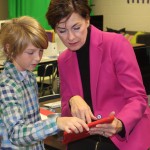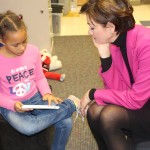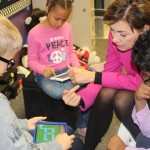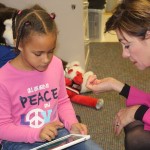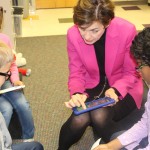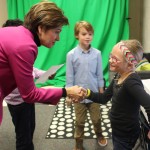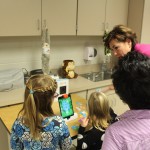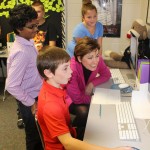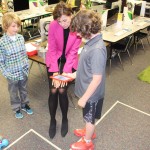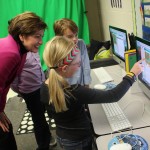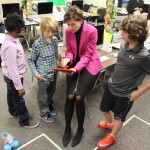Lieutenant Governor Kim Reynolds Visits Brookview during Computer Science Education Listening Tour
Lt. Gov. Kim Reynolds visited Brookview Elementary today as part of her Computer Science Education Listening Tour November 14-15. Lt. Gov. Reynolds spent 45 minutes learning about program coding from students grades 1-5. Waukee Community School District’s elementary students have computer class at least once every six days.
- First graders, Ivy Allen & Kinley Bergman, shared projects created with Osmos Coding on an iPad and explained what sequence was.
- Sequence is the very first concept a student must understand when learning to code. Also known as order of events, a computer will execute commands exactly in the order or sequence they are written. As a programmer, it is important to make sure that the commands given to a computer are in the right sequence, otherwise, a program might not run as expected.
- Second graders, Gabby James & Julian Mizer, shared projects created with Kodable App on an iPad and explained what a condition was.
- Conditions (conditional expressions) are the second of three basic flow control structures in programming. Like sequence, conditions influence a computer program’s decision-making process. They are also called if/then statements. Example: If you land on the yellow square, then turn right.
- Third Graders, Harrison Allen & Maddie Straka, shared projects created with Code.org Code Studio Curriculum and explained what a repeat loop was.
- Loops are commands that are used to repeat a portion of code until a process is complete, and are essential to many repetitive tasks commonly required in programming. Loops save time. Programmers often need to repeat the same code hundreds of times in one program. Programmers use loops to save themselves valuable time when coding simple or complex programs.
- Fourth graders, Brant Krome & Will Hurlburt, shared a coding with robotics project using a Dash & Dot Robot and Ollie and why it’s important to use and understand robotics.
- As robotics and computers become increasingly prevalent in students’ lives, understanding programming and programming concepts is becoming imperative for students’ success. Robots are a fun, easy and effective way to learn about computer programming. Programming a robot has tangible, observable effects. Testing the robot’s code can be done in a hands-on way with visual results.
- Fifth graders, Drew Hurlburt, Avery Bergman and Chase Hamilton, shared video games created using Scratch programming and explained why and how games are created.
- The ability to code computer programs is an important part of literacy in today’s society. When people learn to code in Scratch, they learn important strategies for solving problems, designing projects and communicating ideas. These students have applied the important coding concepts that they have learned in grades K-4 and can now use code to write their own programs.


